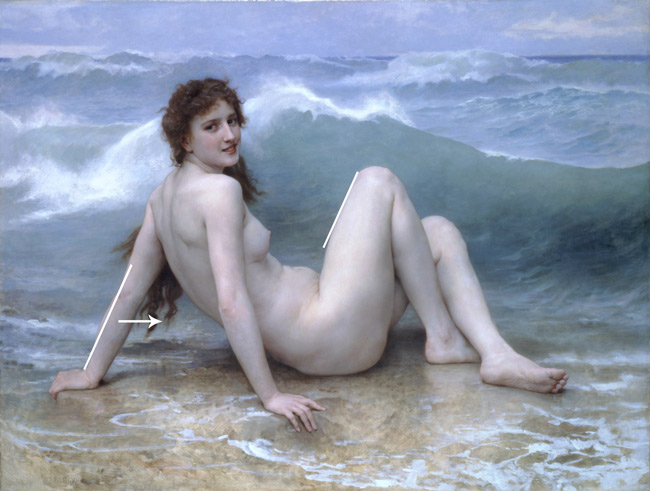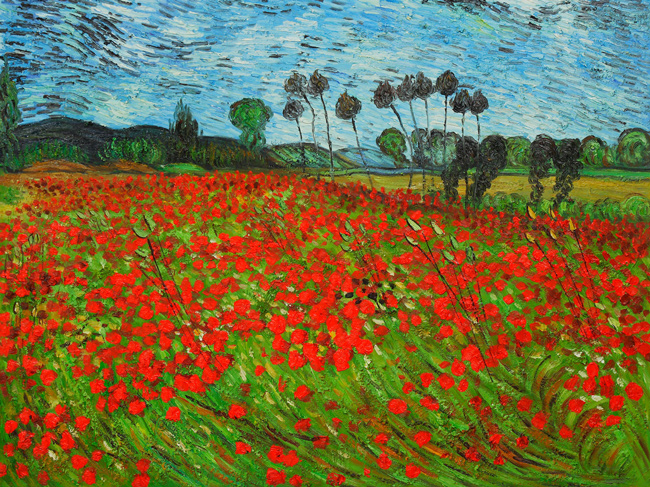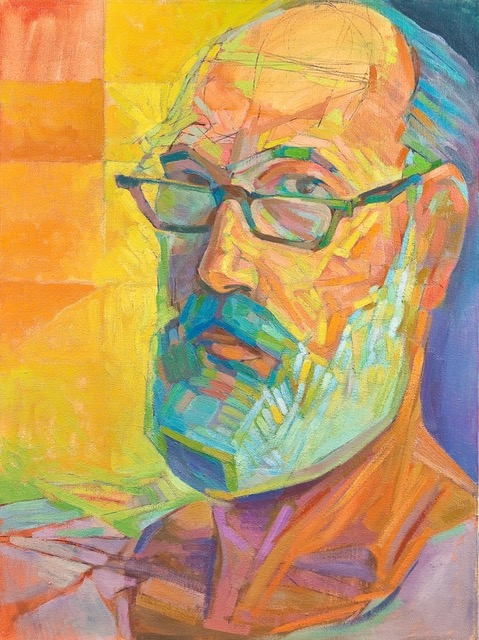Today we are going to take a look at this excellent painting called “The Wave” by William-Adolphe Bouguereau. We’ll see how he uses the root 5 grid to inspire the model’s pose which is full of rhythm.
Just by looking at the painting we can “feel” that something masterful is going on in the background. What is it though? Why does it appeal to us in such a way? This specific technique is called “Gamut,” a limited number of directions. A technique used by the master painters which can help create rhythm on a subterranean level (Myron goes over gamut in detail throughout his DVD series). That’s the magic of using design techniques like this. You can communicate a secret language to your viewer and they can appreciate it, even though they can’t speak the language.
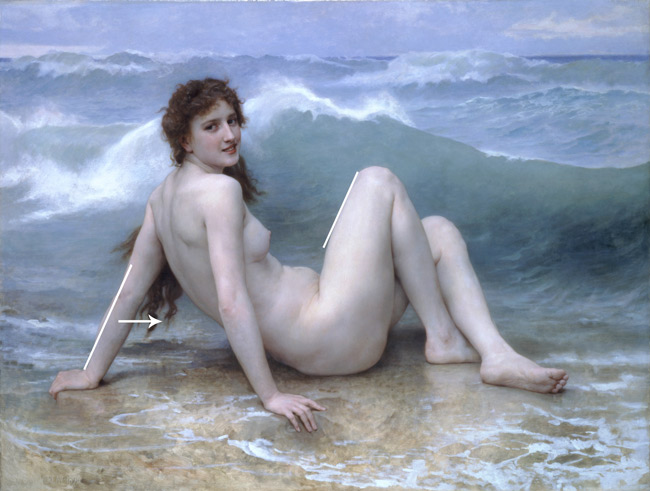
In this first example, we can see how Bouguereau uses three root five rectangles side by side to help him organize his canvas. As the grids line up you can begin to see how the limbs of the model are locking in and paralleling the dynamic symmetry.
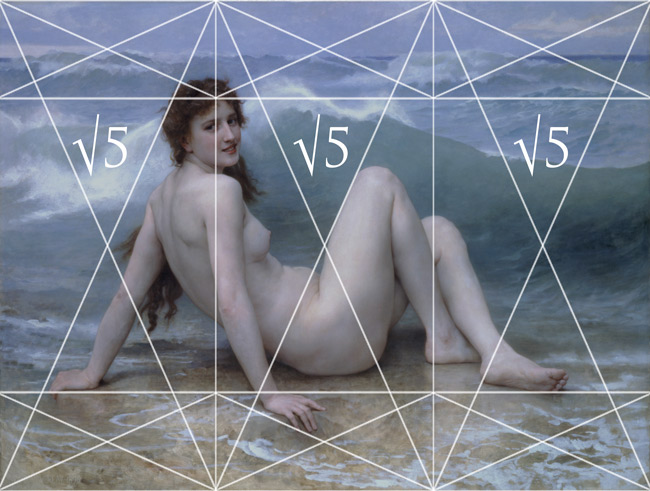
Rhythm can easily be incorporated into your painting by allowing the model to repeat the intervals of her pose. Just as Bouguereau has done here.
In the image below we can see all of the repeating intervals that Bouguereau uses…all of them derived directly from the diagonals and reciprocals of the root 5 grid. All of these lines may seem confusing at first if you’re not familiar with gamut, but below I’ll break it down very simply and show you how to find it in a painting.
When analyzing a painting for gamut, tracing paper can be used to create the necessary marks of discovery. Software such as Photoshop can also be used which can be seen in these examples.
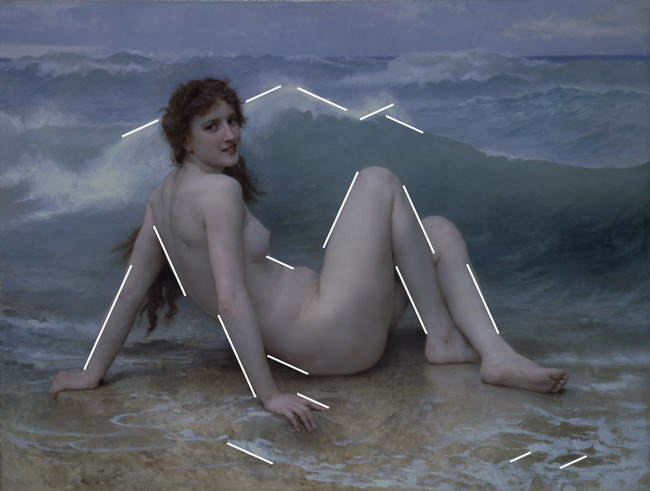
If you’re in a museum and you want to see if the artist used gamut in the painting (most of them did), you find a major diagonal (whether it’s a tree, mountain, or model’s leg) and just follow it across the painting. Her arm is creating a major diagonal, so we locate it, then follow it across the painting with our eyes. If a master painter creates a major diagonal, you better believe he/she is going to use this opportunity to create repeating intervals to utilize the technique of rhythm and make the masterpiece more enjoyable for his viewers. That’s why gamut is such an important technique to understand and employ.
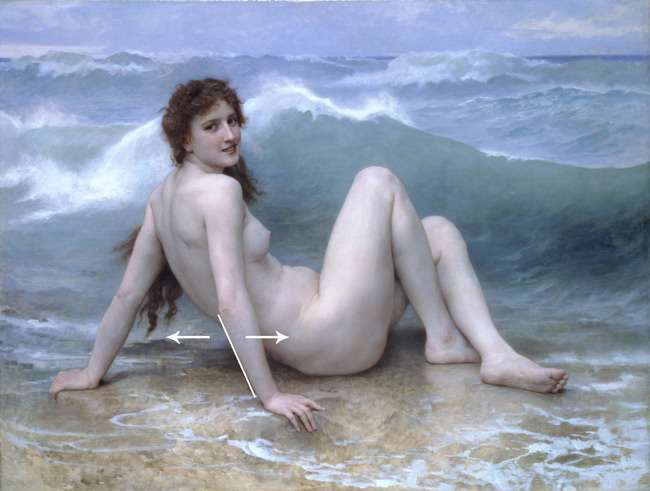
Here we can find the other intervals by locating another major diagonal (her other arm) and following it across with our eyes.
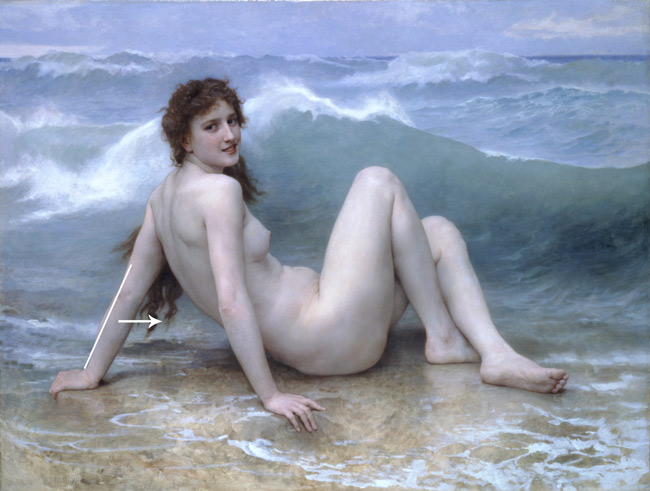
Can you see how easy it is once we know what we are looking for and how to find it? This is a quick way to see if the artist is using gamut within the painting. You can then break it down further and find it in smaller intervals as we saw in the example above where rhythm is carried into the wave, torso, and surrounding water.
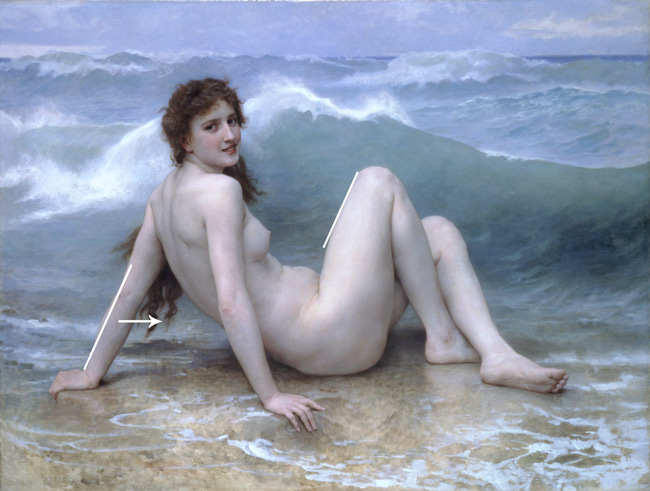
That’s it for today! Try to find the master’s use of gamut next time you visit the museum or flip through an art book. The more you begin to see and understand this technique, the easier it becomes to incorporate it into your art. See you next time!
